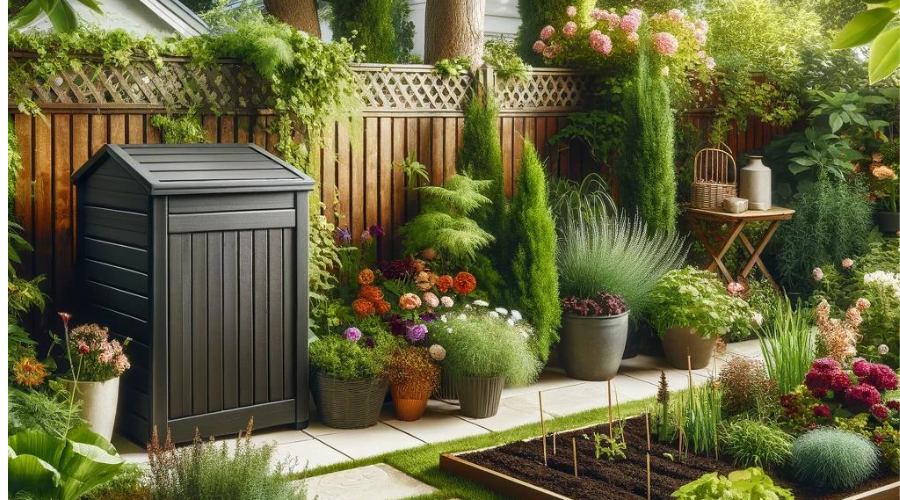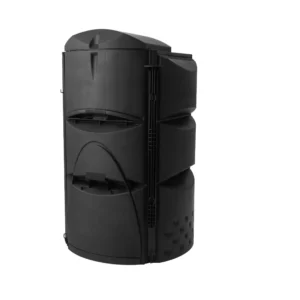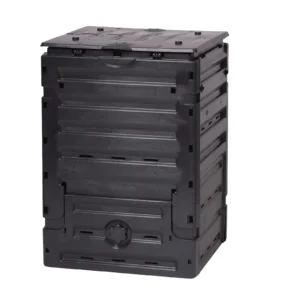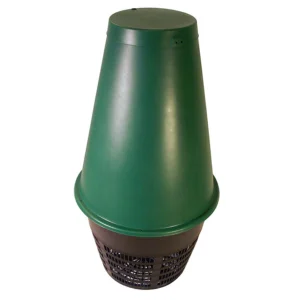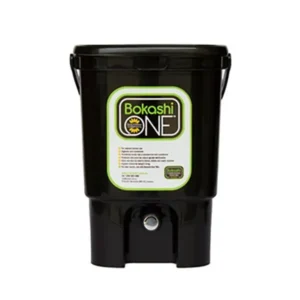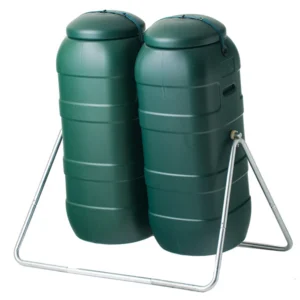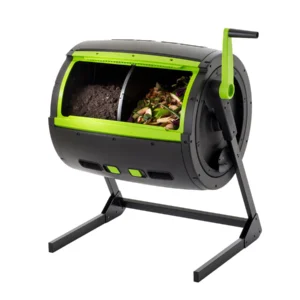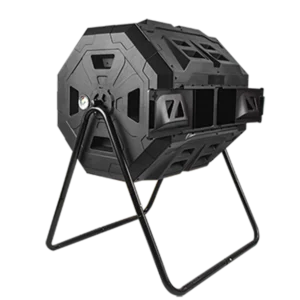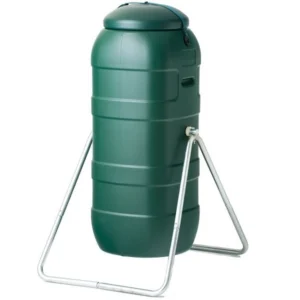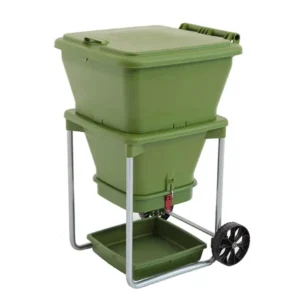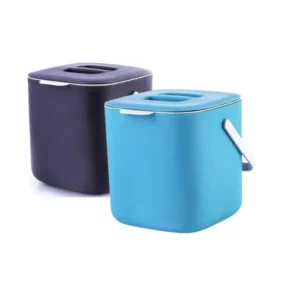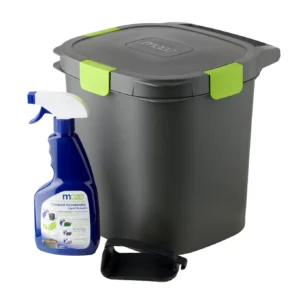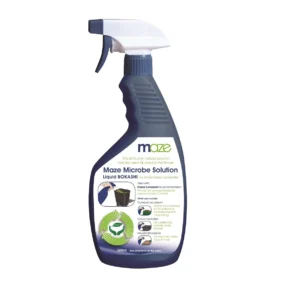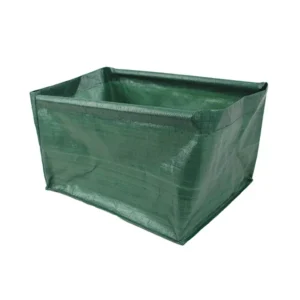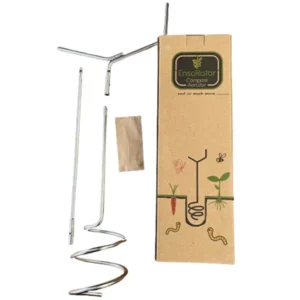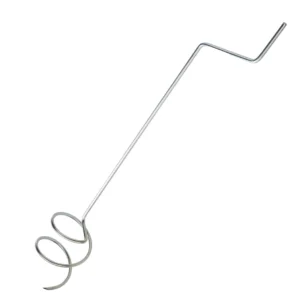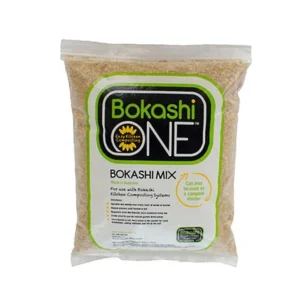Composting is an excellent way to reduce food waste, create nutrient-rich soil for your garden, and minimize your environmental impact. However, selecting the best compost bin can be a daunting task. In this blog post, we’ll explore the various composting options available and help you choose the best bin method based on your specific needs and circumstances.
Factors to consider before Choosing a Best Compost Bin
Before you jump into the exciting world of composting, you should figure out which composting method is the best fit for you. Think about your space, how much time you want to put into it, and if you care about how it looks.
Available Space: First off, think about the space you’ve got to work with. Measure out the area where you plan on putting the bin and make sure you choose one that fits nicely without taking up too much room.
Amount of Compost: Next, take a look at how much food scraps and yard waste you tend to accumulate. That’ll help you figure out what size bin you need. You don’t want to end up with a tiny bin that fills up way too fast, but you also don’t want a massive one that’s overkill for your needs.
Climate: Another important factor is your local climate. Depending on where you live, the weather could have a big impact on your composting process. If you’re in a cold area, you might need a bin that can handle the chill. In a hot climate, you’ll want something that can keep things from getting too steamy.
Budget: And of course, there’s the old budget to consider. Set a price range that works for you and then shop around for the best deal. Sometimes the most expensive option isn’t necessarily the best – you can find some great composters at reasonable prices if you do a little digging.
There are different methods, each with its own perks, so pick the one that suits your unique situation.
Choosing a Best Compost Bin for Your Eco-Friendly Garden
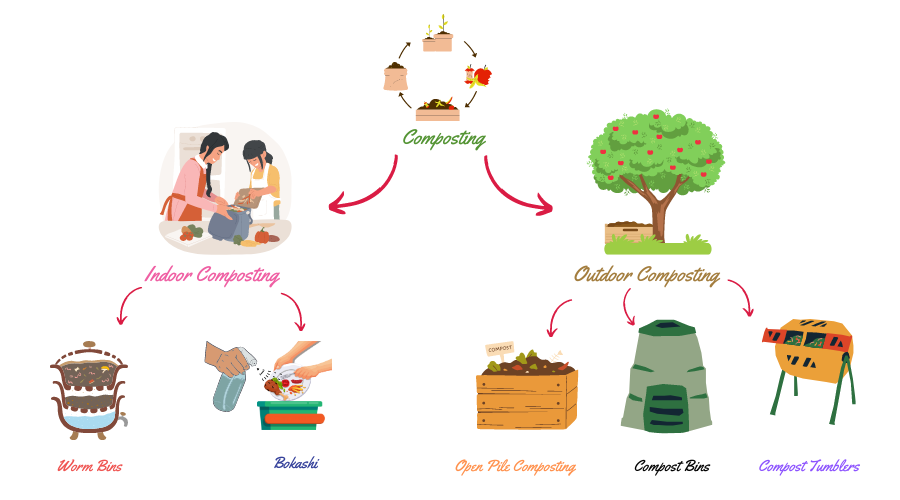
Outdoor Composting
Outdoor composting bins are the most common and versatile option for those with access to a backyard or garden space. These bins come in various sizes and materials, each with its own advantages and disadvantages.
Open Pile Composting: The Old-School Method

It is like the oldest trick in the book for making compost. You just gather up your organic scraps, pile them up, and let them break down naturally in a big heap out in the open. No fancy bins or tumblers are needed.
It’s super simple and doesn’t cost much, and you can do it right in your backyard or garden. I like that it requires less maintenance than some other composting methods.
The key is to choose a dry, shady spot near a water source for your open pile. Aim to make the pile about 3 feet high, wide, and deep. That size helps keep the right temperatures for the decomposition to work its magic.
Advantages
Disadvantages
Budget-friendly: Absolutely free. No equipment is needed!
Easy to manage: Just keep turning it with a shovel or pitchfork to help it decompose faster.
Perfect for large volumes: Ideal if you’ve got a big yard and plenty of leaves and grass clippings.
Simplicity: It’s the most straightforward and cost-effective method. All you need is a designated area in your yard.
Pests love it: From possums to rodents, open piles can attract unwanted guests.
Weather woes: Rain can drench it, and dry spells can halt decomposition.
Odours: Without containment, an open pile may generate odours, especially if not properly managed or if there’s an imbalance of materials.
Who’s it for? If you have space to spare and don’t mind a bit of extra effort, this could be your go-to. It’s especially great for those who enjoy a bit of rustic charm and aren’t bothered by a few critters.
Compost Bins: The Set it and Forget it choice
A compost bin is like a special container for making compost. You can find them in different materials like wood, plastic, or metal, and they come in all shapes and sizes. Enclosed bins with lids and removable doors for odor control and easy access. They provide a convenient and controlled environment for decomposition, offering several advantages over open piles.
When choosing a compost bin, look for features like weather resistance, ventilation holes, sturdy construction, and a lid or removable door. The size and type of bin you select will depend on your available space, the amount of organic waste you generate, and your composting preferences.

Advantages
Disadvantages
Affordable and versatile: These come in various sizes to fit different needs and budgets.
Keeps pests out: Like tumblers, they can help deter animals thanks to their enclosed design.
Good capacity: They can handle a fair amount of waste without taking up too much space.
Sturdier: Compost bins are generally more robust and durable, as they’re often made of thicker materials.
Requires manual effort: You’ll need to turn the compost yourself, which can be a bit of a workout.
Slower decomposition: Without the easy turning feature of tumblers, it can take longer to get your finished compost.
Accessing compost can be tricky: Depending on the design, it might be hard to get to the good stuff at the bottom.
Who’s it for? Ideal for gardeners who don’t mind putting in a bit of elbow grease for a reliable, non-fussy composting solution.
Tumblers: The Speedy Solution

Compost tumblers are a type of enclosed compost bin that can be rotated to mix the composting materials. It’s usually shaped like a barrel and sits on a frame.
Tumblers provide a convenient way to compost, with features like removable doors for easy access and turning handles that allow you to rotate the bin without getting your hands dirty.
While tumblers require an initial investment, their ease of use, compact size, and ability to compost a wider range of materials make them a popular choice for many gardeners. With the right balance of materials and moisture, a compost tumbler can produce finished compost in as little as 4-6 weeks.
Advantages
Disadvantages
Quick results: Get ready to use compost in as little as a few weeks thanks to easy turning and aeration.
Efficient Turning: They’re easier to turn, reducing the physical effort required for composting.
No pests allowed: Elevated and enclosed, these tumblers keep out most critters.
User-friendly: Perfect for those who prefer a clean and convenient method — no pitchfork required!
Higher cost: They can be an investment compared to traditional bins or piles.
Size limitations: Generally they have a limited capacity compared to bins, which might not suffice for households with substantial waste.
Can get heavy: Turning a full tumbler might require some muscle.
Who’s it for? Great for urban gardeners or anyone with a smaller space who wants quick, hassle-free composting.
Indoor Composting
Indoor Composting is perfect for apartment dwellers or anyone looking to reduce waste without needing outdoor space.
Worm Bins: The Indoor Innovators
A worm bin is like a home for special earthworms called red wigglers earthworms (Eisenia fetida). These little workers help break down your kitchen scraps and other organic waste. To set up a worm bin, add bedding, live red wiggler worms, and food scraps. The worms will gradually break down the materials into nutrient-rich vermicompost that can be harvested and used as a soil amendment.
Worm bins can be kept indoors or outdoors in a shaded area, as long as the temperature remains between 55-80°F (13-27°C). These are a great option for small-scale composting, as they are low-maintenance, odour-free, and produce valuable compost for gardens and houseplants.

Advantages
Disadvantages
Super-efficient: Worms work fast and turn scraps into high-quality compost.
Indoor-friendly: Perfect for apartments or homes without garden space.
Nutrient powerhouse: The compost and liquid “tea” produced are fantastic for plants.
Needs careful management: Moisture, pH, and temperature must be monitored.
Limited capacity: Not suitable for large volumes of waste.
Initial setup: Getting started can be a bit more involved than other methods.
Who’s it for? Anyone looking to compost year-round from the comfort of their own home, especially those in apartments or without outdoor space.
Bokashi: The Fermentation Fanatic
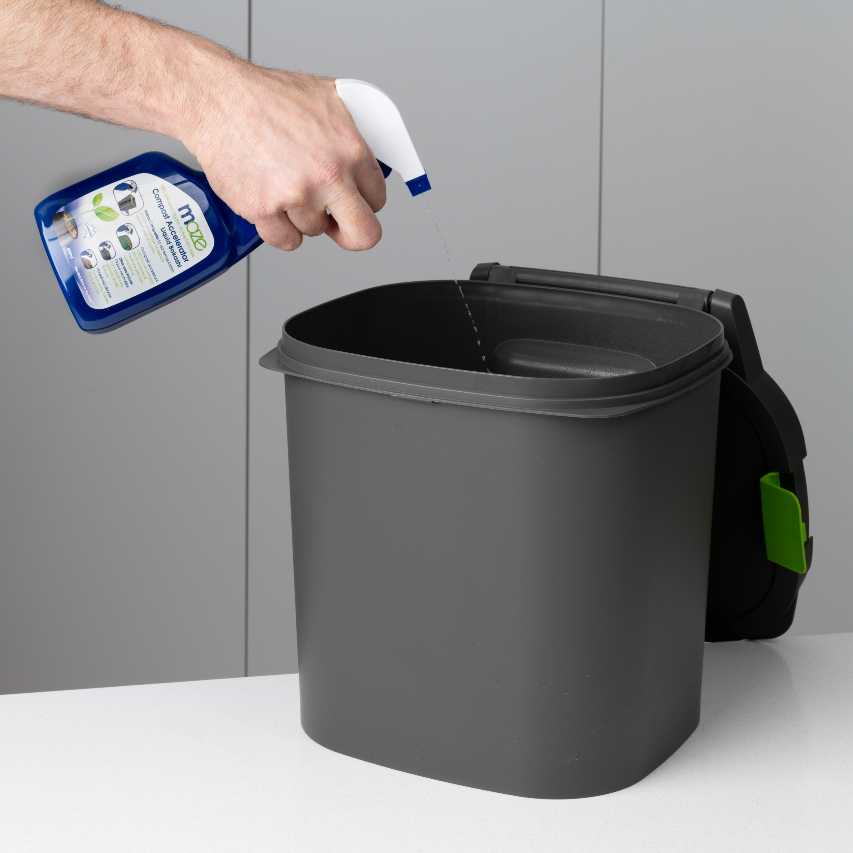
Bokashi composting is unique because it ferments waste, including items like meat and dairy, which traditional composting can’t handle.
To do bokashi composting at home, you need an airtight container like a bokashi bin. Add food scraps, sprinkle with bokashi bran or spray the waste generously with the bokashi inoculant spray after each addition, and press down to remove air pockets. The microbes in the spray will start fermenting the materials.
When the bin is full, seal it and let it ferment for 10-14 days. During this time, drain off the nutrient-rich “bokashi tea” that accumulates. After fermentation, the pickled waste is buried in a trench or “soil factory” in the garden. The microbes continue breaking it down, improving soil structure and fertility.
Advantages
Disadvantages
Quick process: Ferments waste in just a few weeks, making it faster than traditional composting.
Versatile waste handling: Can deal with almost all kitchen waste.
Compact and odor-controlled: Small enough for indoor use and designed to control odors effectively.
Secondary processing required: The end product must be buried in soil or added to a traditional compost heap.
Ongoing costs: Requires the purchase of Bokashi bran to maintain the fermentation process.
Potential for odors: If not managed properly, it can smell stronger than other methods.
Who is it for? Those who need a fast, indoor-friendly composting method that can handle a wide variety of waste types.
Other Composting Methods
Electric Composters
Electric composters are designed for indoor use and can be used year-round, even in cold climates. They are ideal for those who want a hands-off approach to composting.
The machine uses a combination of drying, grinding, and cooling cycles to process the waste. This usually takes 3-5 hours, much faster than traditional composting.
During the process, the food waste is dehydrated and reduced in volume by up to 90%. The final product resembles a dry, powdery or chunky material that still contains the organic matter from the original food scraps. Some electric composters have features like activated carbon filters to reduce odours during the process.
While electric composters can be convenient for reducing food waste, it’s important to understand that their output is not true compost. The dehydrated material still needs to be composted further or aged before it can be safely used as a soil amendment. Experts caution against the misleading marketing of these appliances as “composters” and recommend exploring other options like traditional composting, vermicomposting, or municipal food waste programs to address the food waste problem more effectively.
Freezer Composting
For those without access to outdoor or indoor composting options, freezer composting can be a convenient solution. This method involves storing food scraps in the freezer until you can transport them to a composting facility or community drop-off site. Just be sure to empty the freezer compost regularly and avoid adding materials that could cause issues.
Freezer composting is not a replacement for traditional composting, but rather a convenient way to store materials before composting them. The materials still need to be added to a compost pile or taken to a composting facility to complete the decomposition process.
Conclusion
When it comes to composting, there’s no one-size-fits-all solution. Each option has its own unique benefits, so it’s all about finding the one that works best for your lifestyle, space, and composting goals. Whether you’re a city dweller with a tiny balcony or a homeowner with acres of land, there’s a composting method out there that fits your needs and your gardening style. Embrace the process, get your hands dirty, and enjoy the satisfaction of turning trash into treasure for your garden. It’s a win-win for you and the planet!




